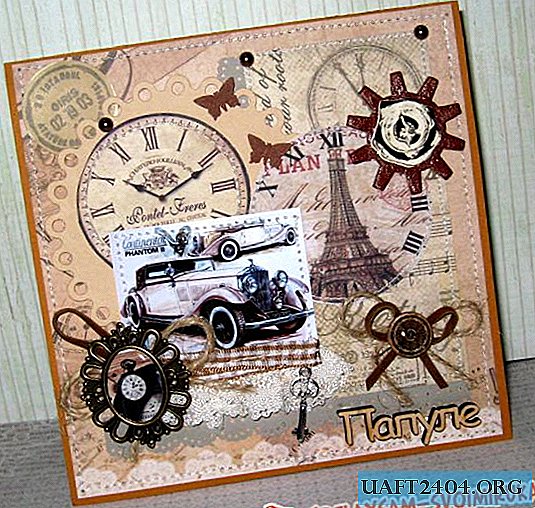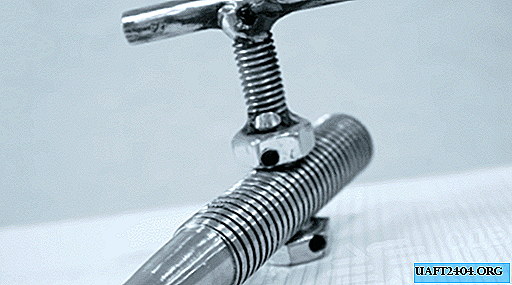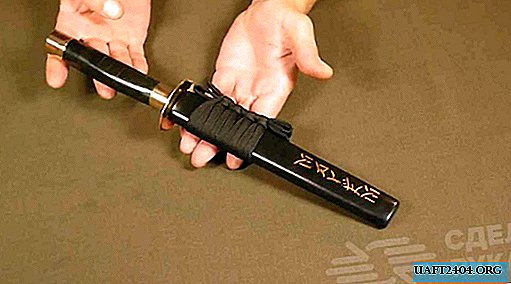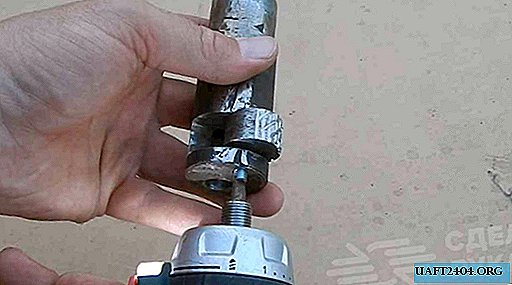Share
Pin
Tweet
Send
Share
Send
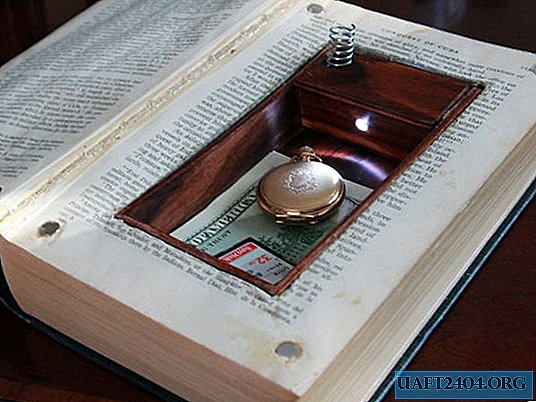
Squealing a suitable book
The first thing I did was visit a nearby bookstore in which I found this interesting book. Interesting, of course, not in terms of text, but in the form of a future cache. She got just five bucks. If you have the opportunity to find a similar book for free, then it will generally be just great for you.


I will make a book with magnetic Velcro using neodymium magnets. And for this you need to make a margin of thickness for the magnets from the first pages. To do this, we glue the first pages with glue like PVA.
So that after gluing the pages do not become wavy and stick together better, put them under a small press.
Splicing book pages
Now you need to glue the pages of the main part of the book. To do this, we smear all three sides with glue, and again we put it under the press. After that I realized that I could not do this, because I still had to drill holes for the magnets and stick them in, which in turn would hold all the pages together.







Removing the inside
It's time to decide on the size of the internal cell of the cache, and finally, make this cut and remove unnecessary paper.
The technology is this: Take a piece of MDF, draw on it the dimensions of our cache cell. We attach a piece to the book and press it tightly. And we drill in the corners of the MDF with a book. Before drilling, it is necessary to measure the thickness of the piece of MDF and the thickness of the book, subtract 0.5-1 centimeter. At the resulting distance, we make a limiter on the drill so as not to drill through the book.
We remove the board, with the help of a ruler and a pencil we connect the holes on the book. We take a sharp clerical knife and begin to slowly cut out pieces of paper. Be careful when handling a sharp knife.







Wood insert
According to the size of the resulting recess, we make parts of a wooden insert. Smear abundantly with glue and glue into the recess. We use improvised materials as spacers.




Making a box with backlight
For LED backlighting, an additional section in the cache is required. I will glue it in the same way from this wood as the main box. We drill a hole for the LED. We form a box for the mechanism for turning on the LED.






Magnetic clasp
In order for the book to close securely, I decided to modify it with magnetic fasteners. To do this, drill holes, four in the lid and four in the main part. I advise you to pre-mark the same on both sides, so that when closing the book, the holes are opposite each other, and, consequently, in the future, magnets.
Then, we paste magnets into the resulting holes.






Fit
I did not quite accurately calculate the inner box and therefore the book did not close tightly. I decided to correct this error by cutting a couple of millimeters of the box with a knife.

Putting backlight
I needed: LED, flat battery (3 volts), battery holder, spring, wires.
We assemble a simple scheme. Solder the wires, after determining the polarity of the LED and the battery.
The switch is made of a spring so that in a relaxed state the contacts of the backlight circuit close. We pass the wire through the spring, and the end of the wire rests on the leg of the LED, thereby closing the circuit. One has only to shorten the spring - the wire goes to the bottom of the LED and the circuit opens.
Of course, it is better to use the switch, and not to arrange dances with a tambourine, but I did not find this.
Final assembly backlight
Set the backlight. We glue all the details on the glue. I used epoxy for the spring. After the whole circuit has been worked out and is functioning, we close the box lid. Now close the book and see if the backlight turns off.












Rub with wax
So that the cache has a presentable appearance, and it wasn’t embarrassing to put our treasures in it, we’ll go through a wax wipe to give the tree shine.


That's all. I finally made this miracle. Now I have this interesting cache in my room.
Original article in English
Share
Pin
Tweet
Send
Share
Send

